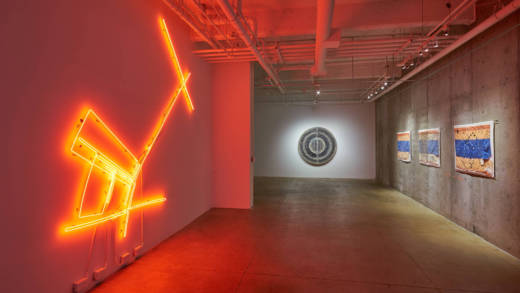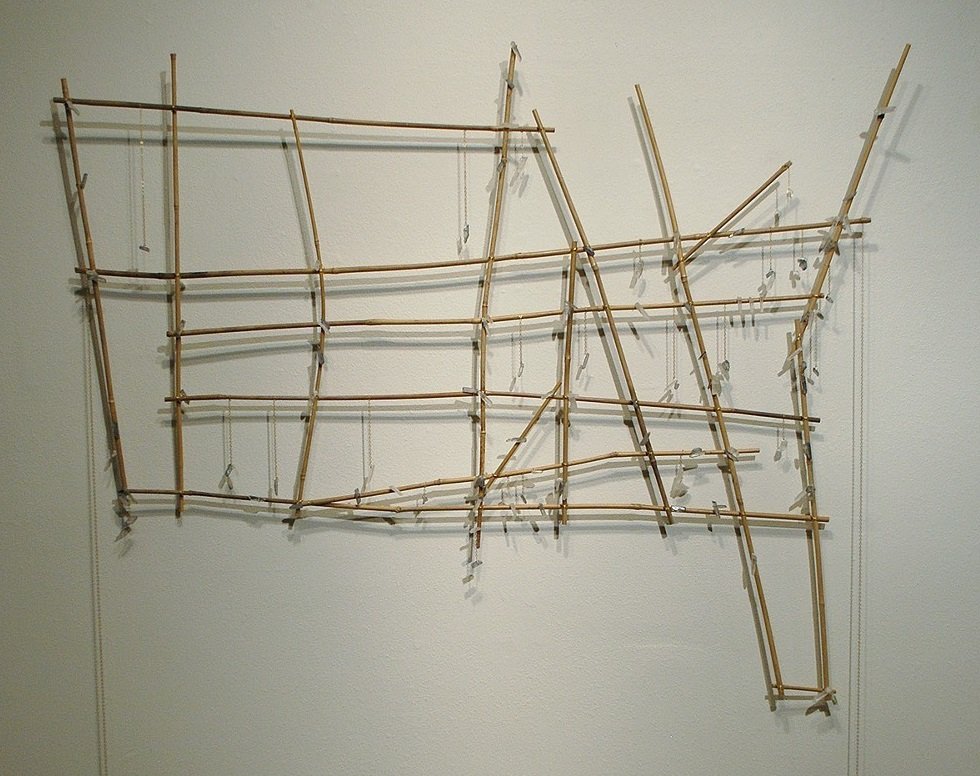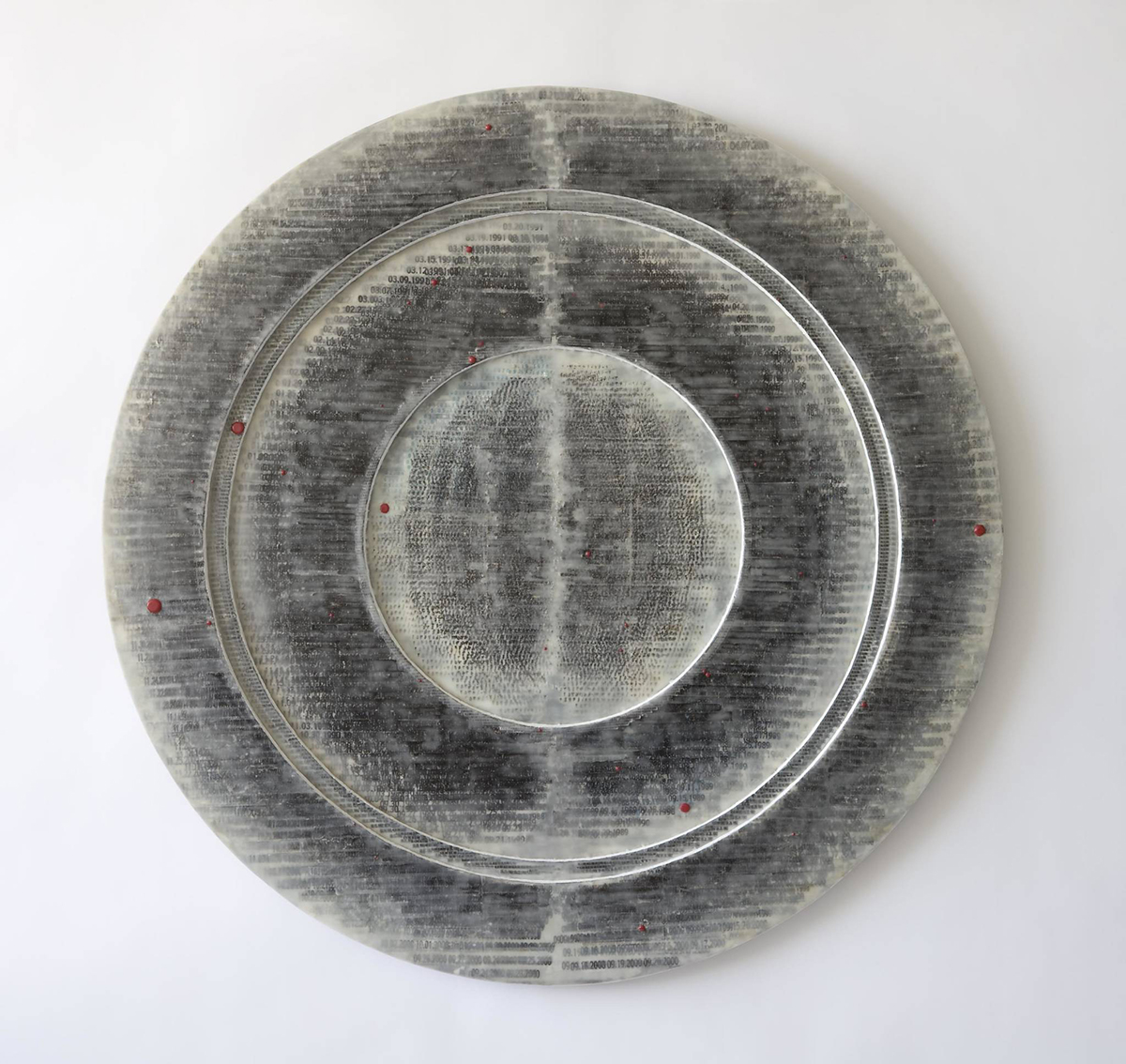In late 1994, the exhibition Mapping opened at New York’s Museum of Modern Art. Mounted by then-curator of painting and sculpture Robert Storr, the medium-sized exhibition comprising 30 pieces by as many artists considered the rich topics of cartography and wayfinding in contemporary art primarily through the narrow aperture of aesthetics. More than two decades on, Storr’s thesis is contextualized and expanded upon in Seeking Civilization: Art and Cartography, on view at San Francisco’s Gallery Wendi Norris through May 6.
Seeking Civilization is not a re-staging of the MoMA installation. In a generously paced presentation of work by seven artists who live in the Bay Area or are represented by regional galleries, curator and gallery program director Justin Charles Hoover illuminates many of Storr’s organizing principles, including knowledge production and project prototyping. He also further develops other themes — most importantly, the physical and psychological boundaries that confine us, and how they are often defied.
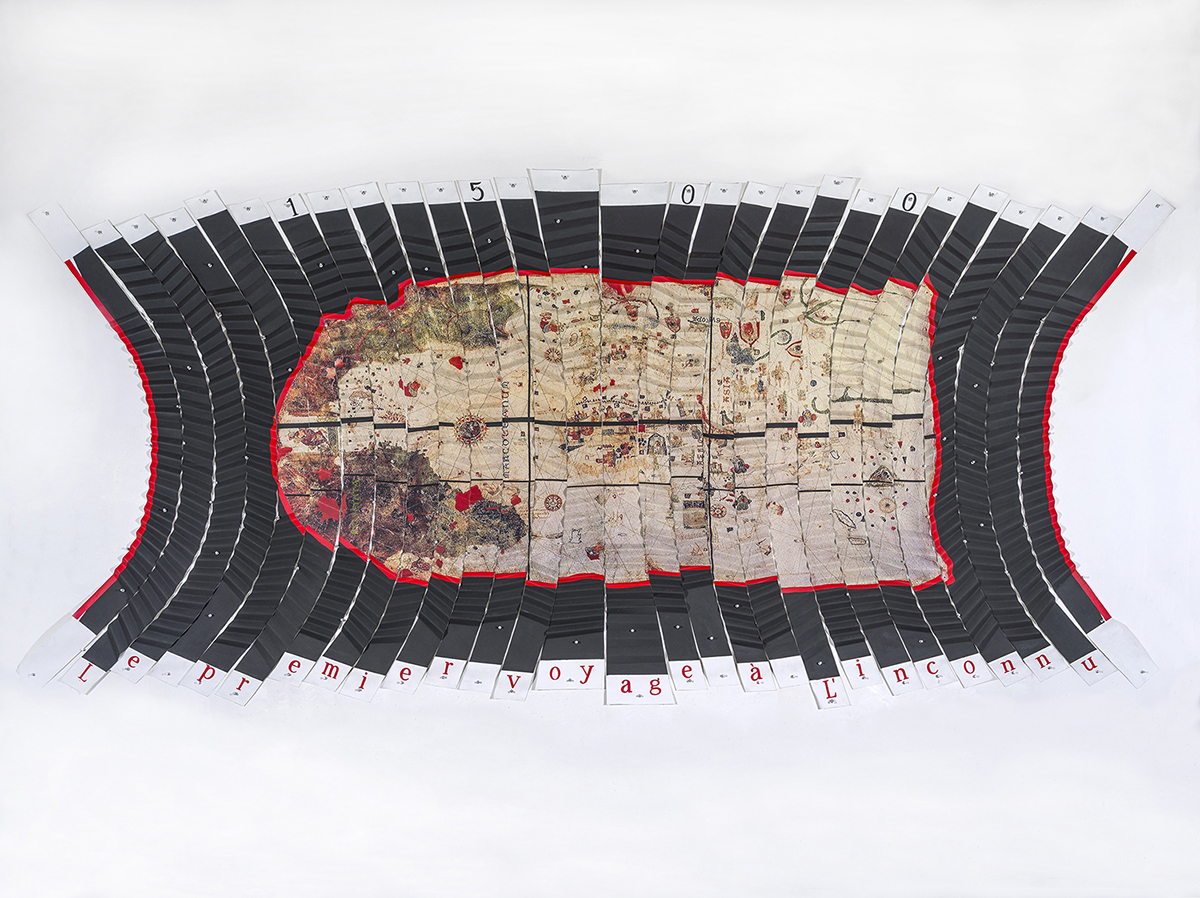
Seeking Civilization is anchored by Miguel Angel Rios’ Le Premier Voyage a L’inconnu (The first trip to the unknown), a version of which was included in the original MoMA installation. Drawn from a reproduction of a map created by Christopher Columbus’ expedition team, this deconstructed image bears none of the authority and order typically associated with maps. It visualizes what Storr described in his catalog essay as “the ultimate pictorial coincidence of exacting representation and total abstraction,” with deliberate emphasis on the latter.
Two additional pieces by Rios hung around the corner from Le Premier also take up cartographic abstraction and demonstrate the artist’s long-term interrogation of colonialism’s disastrous legacy. The inclusion of work by Rios, who is represented by the gallery, solidifies the link between the two exhibitions succinctly, and without overt referentialism.
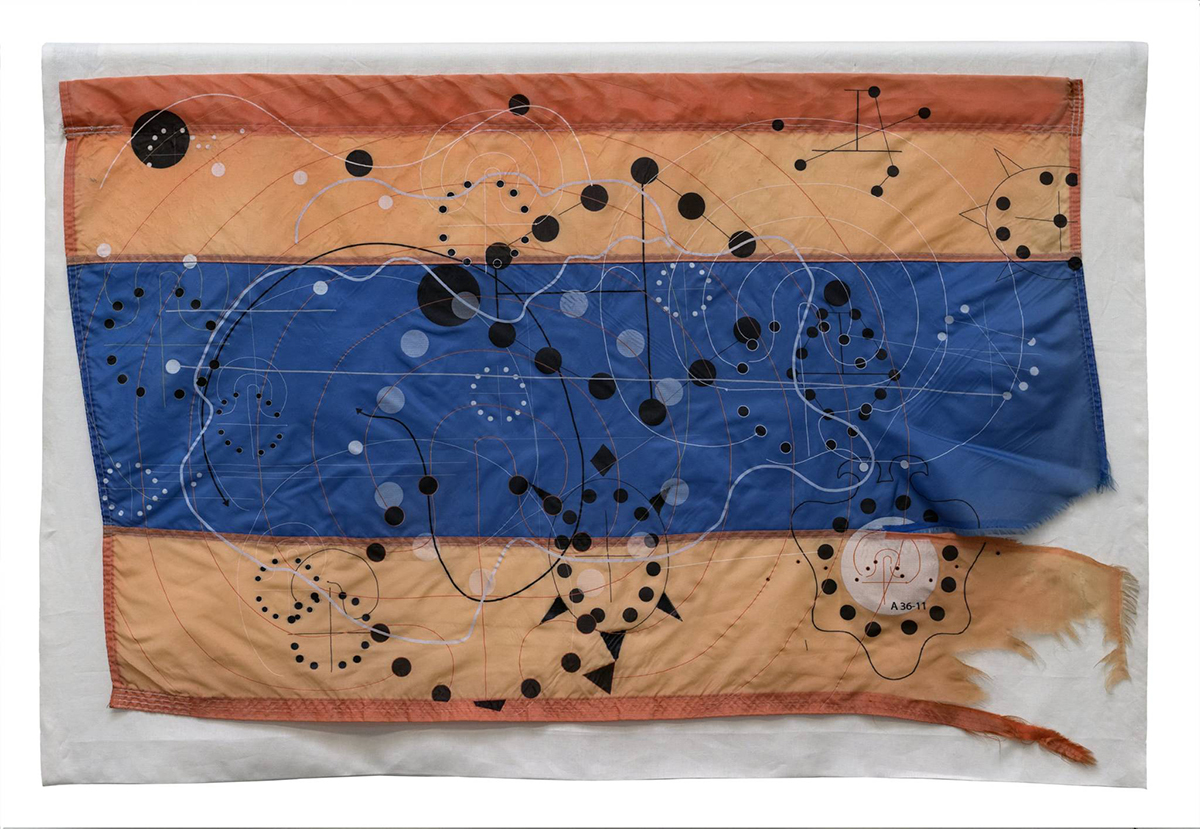
In general terms, maps help us navigate unfamiliar places and, more expansively, demarcate a country’s physical place on the globe. Artists Guillermo Galindo and Michael Arcega approach mapping as an urgent social justice pursuit. Working with weather-beaten flags found at the U.S.-Mexico border and donated by the aid organization Water Stations, Galindo composed sound scores printed directly onto the flags. The frayed fabric superimposed with the composer’s marks gesture to modernist abstract compositions and, more poignantly, imagine the dangers of migrant travel through a violent physical and socio-political environment.
